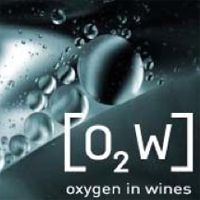Oxygen and wine – the latest
Thursday 15 July 2010
• 1 min read

Oxygen and its impact on wine is a hot topic at the moment, fuelling fervent activity around the world to discover more about how oxygen can be managed through every stage of a wine’s life. To this end, the O2inWines association has been formed by some of the larger companies with a vested interest in the topic to research and develop ‘scientifically based solutions for oxygen management challenges in the wine industry.’
At the London International Wine Fair in May this year, a panel discussion outlined their progress. Andrew Markides from Lallemand described how oxygen was integral to the health of yeast cells during fermentation. The membranes of yeast are increasingly susceptible to attack from ethanol as the fermentation proceeds, but introducing oxygen allows the yeast to produce sterols and unsaturated fatty acids, which helps to strengthen the cell walls.
Pierre-Yves Bournérias from the Institut Oenologique de Champagne then made some points about oxygen intake, specifically as it relates to the crown caps used for ageing sparkling wine whilst sur lie (the more usual alternative to the natural corks used for Bollinger RD). The different liners of these closures have differing levels of oxygen transfer, giving the winemaker control over how the wine will develop in bottle. At disgorgement, as the cap is finally removed and the lees ejected, there is potential for significant oxygen ingress, so Bournérias explained how new equipment to monitor and control that reaction is being developed.
Nomacorc’s Stéphane Vidal also spoke of oxygen chemistry during the bottling process and in particular how important it is to monitor oxygen levels at every stage. Inevitably, given the nature of Nomacorc’s business, he also emphasised the importance of choosing a final closure that allows consistent and reliable oxygen transfer rates.
This was confirmed by Barry Dick and Clemency Yates from Sainsbury’s, who revealed that oxygen is as big a problem as reduction or TCA taint from a retail perspective. They apportioned some of the blame to closures, but gave equal censure to winery practice, especially during the bottling process. They followed this up by claiming that dissolved oxygen levels are now no different for bulk-shipped wine than bottled, thanks to improved technology and practice regarding flexitanks and ISO containers. By controlling and limiting the oxygen in a wine, Sainsbury’s is able to satisfy their customers’ increased demand for lower sulphur wines too.
As wine writer Jamie Goode concluded, ‘oxygen in wine is quite a challenging topic for researchers worldwide and the potential for raising the quality of wines with the right oxygen management is great.’
Become a member to view this article and thousands more!
Premium
- 15,434 featured articles
- 274,222 wine reviews
- Maps from The World Atlas of Wine, 8th edition (RRP £50)
- The Oxford Companion to Wine, 5th edition (RRP £50)
- Members’ forum
Monthly
Annually
£99
Save 10% with annual membership
Professional
- 15,434 featured articles
- 274,222 wine reviews
- Maps from The World Atlas of Wine, 8th edition (RRP £50)
- The Oxford Companion to Wine, 5th edition (RRP £50)
- Members’ forum
- Commercial use of our Tasting Notes
£199
per year
